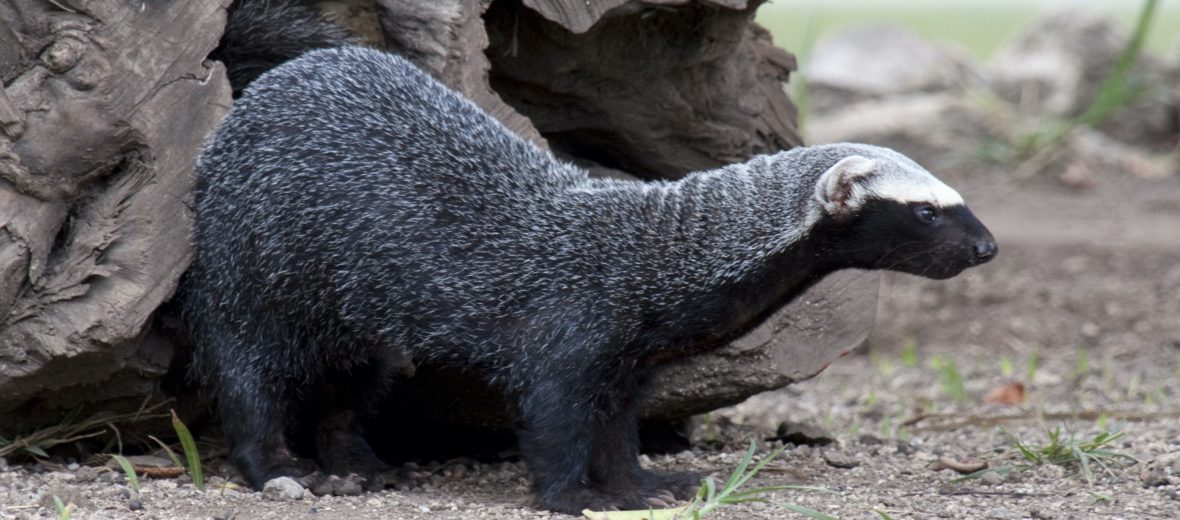
The greater grison kind of looks like a slender honey badger and it can have about the same temperament as one, when threatened. Greater Grisons reside in a wide range of habitats such as rainforests, grasslands, savannas, and evergreen forests of southern Mexico, Central, and South America. They prefer locations near water and they live in rocky alcoves, under tree roots, and vacated burrows. As mentioned, these critters can have a bit of an attitude, but can be quite friendly in captivity. This potential “tude” helps to keep them safe and, sans humans, they’re pretty much predator free. Greater grisons are listed as Least Concern by the IUCN.
First the Stats…
Scientific name: Galictis vittata
Weight: Up to 5 lbs.
Length: Up to 22 inches, plus an 8 inch tail
Lifespan: Up to 12.5 years
Now on to the Facts!
1.) Grisons are part of the mustelidae family, with weasels, stoats, badgers, skunks, beavers, and ferrets.
2.) There are 4 known living and 1 extinct subspecies of grison: Galictis vittata canaster, Galictis vittata brasiliensis, Galictis vittata andina, Galictis vittata vittata, and the Galictis vittata fossilis (from the Pleistocene epoch).
3.) They are equally skilled at running, swimming, and climbing.
4.) These critters are typically diurnal (active during the day) but can be seen in a nocturnal (active at night) capacity.
5.) Primary prey items include: amphibians, fish, birds, and other mammals.
But wait, there’s more on the greater grison!
6.) They kill their prey via a powerful bit to the vertebra just at the base of the skull.
7.) Greater grisons have anal scent glands, like all musteliaes, that secrete a yellowish or greenish musk. This musk isn’t especially noxious when compared with that of other species, it can still be sprayed at attackers, as well as being used to mark their territory.
Did you know…?
Grison is derived from the French word “Gris”, which means “grey”.
8.) Male grisons are polygynous (mate with several partners).
9.) Females give birth to 2 – 4 young in October. The female raises her young on her own.
10.) The young are born blind and weighing just 1.8 ounces. However, in just 4 months, they will reach their adult size.
Now a Short Greater Grison Video!
Also, check out the Critter Science YouTube channel. Videos added frequently!
Want to suggest a critter for me to write about? Let me know here.




Leave a Reply